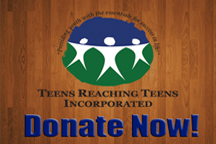By Ruth Hunter-Hill
1. Life is full of transitions, and that can’t be avoided.
Transitions mean we’re learning and growing. Most transitions are positive experiences, even if they present us with challenges.
Transitioning after high school – whether to college or to the workplace – is exciting! It’s a major milestone and a springboard to adulthood.
However, for many who have “invisible” disabilities, this transition may seem daunting. Invisible disabilities are those that are not readily apparent like a broken arm, and can include learning, attention, and emotional disorders. Unfortunately, others equate these disabilities with an unwillingness or inability to learn. Those with a learning disability are no less smart than anyone else. Rather, they simply learn differently or in unconventional learning environments.
Like with most things, transitioning is better if we plan for it. This is especially important for students with disabilities. Those students are equally as entitled to opportunities for academic success as are any other students who are willing to work hard for it.
2. If you’re going to college or certification or trade school – it’s not too late to put together a plan.
Throughout primary and secondary education, resources for students with learning or attention issues are readily available. After high school, resources are still available – although maybe not as plentiful depending on the institution and the students’ individual needs. But when armed with information, confidence, resilience, and persistence, students can find resources to help them reach their academic goals. A report by the National Center for Learning Disabilities (NCLD) shows – among other things – that students with a transition plan are much more likely to complete a college program than students who do not have one. 1 A transition plan is especially important for students with disabilities.
The transition plan is your plan. You get to live it! There’s one mandatory prerequisite before you can start your plan: acknowledge that the learning or attention issue exists. Then the first item on your list should be RESILIENCE. I am speaking from first-hand experience! It took resilience and self-advocacy at the very least for me – in my 50s – to achieve my long-desired bachelor’s degree. This transition won’t happen overnight. At the very least, you must:
• Have a positive temperament
• Recognize that a disability is not something you “grow out” of
• Identify and use accommodations and strategies
• Knowing how to self-advocate in school or at work
So, if you’re a junior or senior in high school, start working on your transition plan today. Be sure to tap people in your support network to get their help and advice.
3. Individual Education Plan (ILP)
Parents of children with disabilities of any kind should research creating an Individual Learning Plan (ILP). With this plan, disabilities can be identified, and an individualized plan can be created and monitored throughout their school career to ensure they have access to the learning aids available. The ILP is provided as a service in public schools and may provide customized free services to assist with academic success throughout primary and secondary school.
4. Not everyone will go to college – it’s not for everyone.
But did you know that employers are required to make reasonable accommodations for people with disabilities in order to comply with the Americans with Disabilities Act (ADA)? The ADA is a civil rights law that prohibits discrimination against individuals with disabilities in all areas of public life, including jobs, schools, transportation, and all public and private places that are open to the general public.2 The motivation behind this bill is to provide oversight to ensure that everyone has equal opportunities in the workplace, despite a physical or “invisible” disability. Things like wheelchair ramps for public buildings came about because of the ADA requiring that everyone should have equal access to public facilities.
5. No matter where you are in your school career, it’s never too late for a bit of planning. This article, along with the resources below, is a very small part of the resources available – many at no or very low cost to you.
Remember to arm yourselves with information, confidence, resilience, and persistence. Success is imminent!
1National Center for Learning Disorders Researchers, “www.ncld.org/transitioning-to-life-after-high-school,” National Center for Learning Disorders (NCLD). July 12, 2019
2ADA National Network, “An Overview of the Americans with Disabilities Act,” https://adata.org/factsheet/ADA-overview,” ADA National Network, 2017



